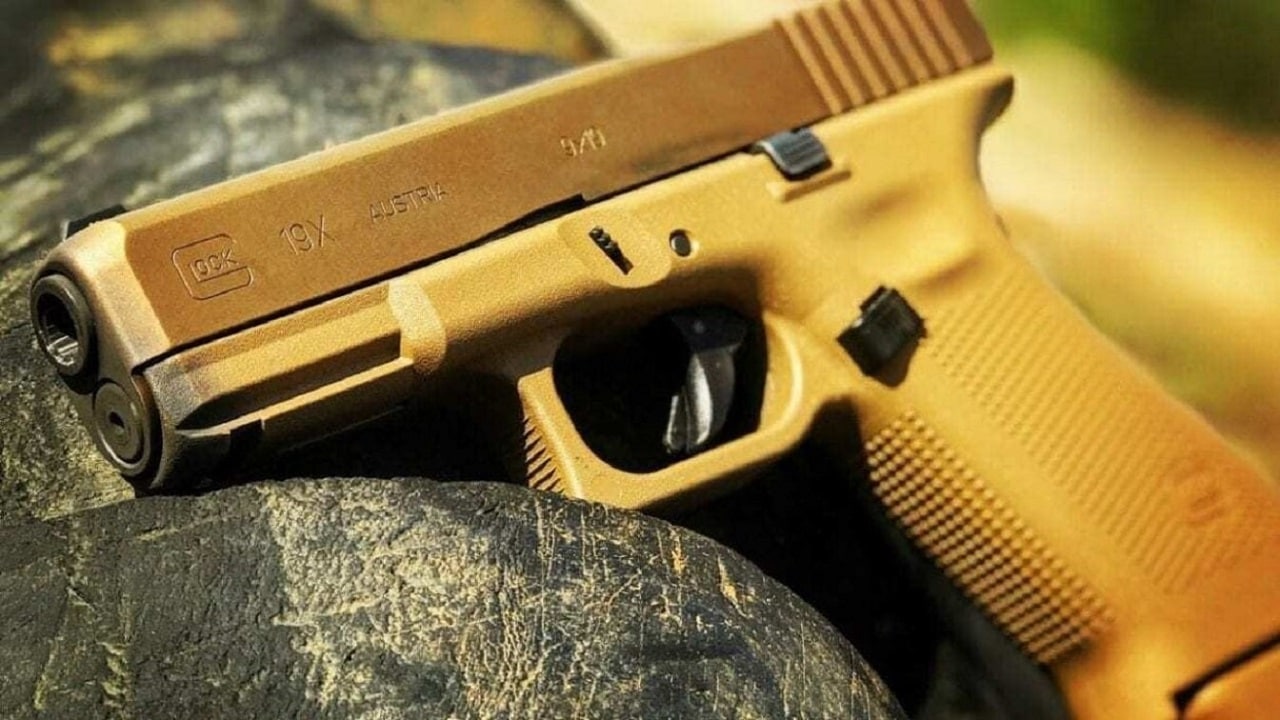The Glock 19X, to this day, is one of the most popular consumer handguns in the U.S.
However, shooters know that this gun was built for sale to the U.S. Army, and the brass said not for various reasons, going with Sig Sauer instead.
Here is the story of why that happened:
The Glock series of pistols is one that needs no introduction to firearms enthusiasts around the world. As a renowned gun writer, self-defense expert, and venerable law enforcement veteran Massad Ayoob pointed out in a cover story for GUNS Magazine back in September 1990, there’s hardly any middle ground on the Glock; people either love it or hate it (I started off in the latter category, but over time I grew to be a member of the former demographic).
Eventually, the Glock brand cornered roughly 60-70% of the American domestic law enforcement market share at one point. However, Glock hasn’t attained the same level of success with the U.S. military, as can be seen from the plight of the Glock 19X.
Glock 19X – “I Don’t Want You For U.S. Army”
In 2017, the U.S. Armed Forces decided to find a replacement for its aging Beretta M9 pistols that had been serving since 1984 as the official issue duty sidearm. (Some wags and pundits out there believe this decision was a big waste of money, and then there are those grumbling over the decision to retain the 9mm cartridge instead of going over to the .45 ACP, but those are whole separate discussions in and of themselves.) The SIG Sauer P320 AKA the M17/M18 was chosen over the Glock 19X, which prompted “the millions **AND THE MILLIONS** of the Glock’s fans” (to paraphrase Dwayne “The Rock” Johnson) to ask “Why?”
My 1945 colleague Brent M. Eastwood provides the answer to this vexing question:
The SIG models scored outstanding in initial reliability; outstanding in ammunition; outstanding in three categories of license rights, and outstanding in three aspects of manufacturing including ammunition. The 19X was outstanding in initial reliability; only “acceptable” in warfighter ergonomics; and “marginal” in ammunition licensing. So, the deciding factors were ammunition licensing, price, and ergonomics. SIG Sauer was smart to have the ammunition partnership with Winchester. And Glock took the silver medal, but in consolation, got a pistol that is still popular in the civilian market.
So then, what exactly did the U.S. Army—and her sister services—pass up on, anyway?
The X Factor
I myself currently own four different Glocks (the original tried-and-true Model 17 in 9mm, the G21SF in .45 ACP, the subcompact “baby Glock” G26 in 9mm, and the G38 in the short-lived .45 GAP caliber) and have put in trigger time with several others, including the original G19, but have yet to experience the G19X and am therefore unable to give my dearly beloved readers any first-hand impressions of it. So, in the meantime, we’ll have to turn to my 1945 colleague Richard Douglas for his range report on the piece:
If you stare at the Glock 19X for too long, it’ll start to look weird. The grip is that of a Glock 17, at about 5.5 inches. The slide clocks in at 7.5 inches, the same as a Glock 19. It does look a little funky since the slide and grip height are pretty close in size, but I’ve come to love it. I’m also extremely fond of the sand color chosen for the 19X. It’s a good-looking pistol and I don’t reckon I’d want to change anything about it.
Mr. Douglas reports flawless reliability—not surprising at all given the brand’s reputation for unparalleled reliability and longevity—even with “trashy ammo” such as steel case rounds that tend to beat up and wear down more delicate handgun brands.
Richard also reports good accuracy with his G19X, at 25 yards and sub-15 yards alike, although he doesn’t go into specific group sizes. For you numbers geeks and nitpickers out there who want such specifics, there’s the NRA American Rifleman’s official range report, which employed accuracy tests at 25 yards using five consecutive five-shot groups for three different loads: Hornady Critical Duty 135-grain FlexLock, NovX ARX 65-grain + PCF, and SIG Sauer (oh, the irony, eh) 124-grain FMJ. The NovX loading produced the best accuracy figures at 2.81 inches, whilst the SIG ammo (oh, the irony again, eh) produced the “worst” groups, relatively speaking, at 3.61 inches, and the Hornady offering basically split the difference. All told, an average extreme spread of 3.15 inches, which is more than sufficiently accurate for combat purposes, and indeed there are plenty of other range reports out there which obtained even better results.
So then, for all my fellow private citizen Glock fans out there, the U.S. Armed Forces’ loss can still be very much our gain.
Christian D. Orr is a former Air Force officer, Federal law enforcement officer, and private military contractor (with assignments worked in Iraq, the United Arab Emirates, Kosovo, Japan, Germany, and the Pentagon). Chris holds a B.A. in International Relations from the University of Southern California (USC) and an M.A. in Intelligence Studies (concentration in Terrorism Studies) from American Military University (AMU). He has also been published in The Daily Torch and The Journal of Intelligence and Cyber Security. Mr. Orr has 33 years of shooting experience, earned Pistol/Small Arms Expert ratings with the Air Force, Customs & Border Protection (CBP), and Immigration & Customs Enforcement (ICE), and has won multiple shooting trophies, medals, and awards via the Glock Sport Shooting Foundation (GSSF), IDPA, and the Nevada Police and Fire Games (NPAF).
From 19FortyFive
The Marjorie Taylor Greene Disaster Has Arrived

